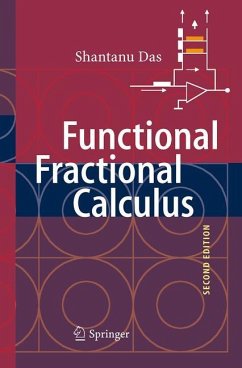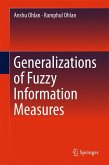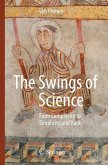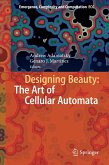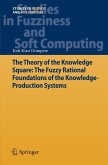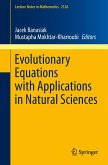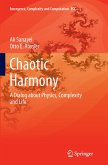When a new extraordinary and outstanding theory is stated, it has to face criticism and skeptism, because it is beyond the usual concept. The fractional calculus though not new, was not discussed or developed for a long time, particularly for lack of its application to real life problems. It is extraordinary because it does not deal with 'ordinary' differential calculus. It is outstanding because it can now be applied to situations where existing theories fail to give satisfactory results. In this book not only mathematical abstractions are discussed in a lucid manner, with physical mathematical and geometrical explanations, but also several practical applications are given particularly for system identification, description and then efficient controls.
The normal physical laws like, transport theory, electrodynamics, equation of motions, elasticity, viscosity, and several others of are based on 'ordinary' calculus. In this book these physical laws are generalized in fractional calculus contexts; taking, heterogeneity effect in transport background, the space having traps or islands, irregular distribution of charges, non-ideal spring with mass connected to a pointless-mass ball, material behaving with viscous as well as elastic properties, system relaxation with and without memory, physics of random delay in computer network; and several others; mapping the reality of nature closely. The concept of fractional and complex order differentiation and integration are elaborated mathematically, physically and geometrically with examples. The practical utility of local fractional differentiation for enhancing the character of singularity at phase transition or characterizing the irregularity measure of response function is deliberated. Practical results of viscoelastic experiments, fractional order controls experiments,design of fractional controller and practical circuit synthesis for fractional order elements are elaborated in this book. The bookalso maps theory of classical integer order differential equations to fractional calculus contexts, and deals in details with conflicting and demanding initialization issues, required in classical techniques. The book presents a modern approach to solve the 'solvable' system of fractional and other differential equations, linear, non-linear; without perturbation or transformations, but by applying physical principle of action-and-opposite-reaction, giving 'approximately exact' series solutions.
Historically, Sir Isaac Newton and Gottfried Wihelm Leibniz independently discovered calculus in the middle of the 17th century. In recognition to this remarkable discovery, J.von Neumann remarked, "...the calculus was the first achievement of modern mathematics and it is difficult to overestimate its importance. I think it defines more equivocally than anything else the inception of modern mathematical analysis which is logical development, still constitute the greatest technical advance in exact thinking."
This XXI century has thus started to 'think-exactly' for advancement in science & technology by growing application of fractional calculus, and this century has started speaking the language which nature understands the best.
The normal physical laws like, transport theory, electrodynamics, equation of motions, elasticity, viscosity, and several others of are based on 'ordinary' calculus. In this book these physical laws are generalized in fractional calculus contexts; taking, heterogeneity effect in transport background, the space having traps or islands, irregular distribution of charges, non-ideal spring with mass connected to a pointless-mass ball, material behaving with viscous as well as elastic properties, system relaxation with and without memory, physics of random delay in computer network; and several others; mapping the reality of nature closely. The concept of fractional and complex order differentiation and integration are elaborated mathematically, physically and geometrically with examples. The practical utility of local fractional differentiation for enhancing the character of singularity at phase transition or characterizing the irregularity measure of response function is deliberated. Practical results of viscoelastic experiments, fractional order controls experiments,design of fractional controller and practical circuit synthesis for fractional order elements are elaborated in this book. The bookalso maps theory of classical integer order differential equations to fractional calculus contexts, and deals in details with conflicting and demanding initialization issues, required in classical techniques. The book presents a modern approach to solve the 'solvable' system of fractional and other differential equations, linear, non-linear; without perturbation or transformations, but by applying physical principle of action-and-opposite-reaction, giving 'approximately exact' series solutions.
Historically, Sir Isaac Newton and Gottfried Wihelm Leibniz independently discovered calculus in the middle of the 17th century. In recognition to this remarkable discovery, J.von Neumann remarked, "...the calculus was the first achievement of modern mathematics and it is difficult to overestimate its importance. I think it defines more equivocally than anything else the inception of modern mathematical analysis which is logical development, still constitute the greatest technical advance in exact thinking."
This XXI century has thus started to 'think-exactly' for advancement in science & technology by growing application of fractional calculus, and this century has started speaking the language which nature understands the best.
From the reviews of the second edition:
"This is a book that ought be read by any applied or theoretical researcher interesting in this topic, because the book is plenty of good work. It is possible to learn from it, especially, from the applications included, and finally, because the reader will get a lot of ideas to produce new works in the area of the fractional calculus." (Juan J. Trujillo, Zentralblatt MATH, Vol. 1225, 2012)
"The author has developed this subject without mathematical details but with correct mathematics and proper explanation of the generalization of the integer order to fractional order calculus ... . This applied and innovative approach of presentation is really appreciable for understanding an application oriented subject to the scientists and engineers. ... the author has elaborated each concept herein via very relevant examples of practical utility, is real novelty. ... this book is highly illuminating to the researchers of different fields of science and engineering." (Susmita Sarkar, International Journal of Mathematics and Computation, Vol. 18 (1), 2013)
"This book is a very timely addition to the existing literature in this subject ... . The book may be considered as a textbook for students of mathematics and recommended as a useful reference and guidebook for researchers in other streams of science and technology. A proof of acceptance of the book by the scientific community is quite evident from over 200 citations it has already received within such a short time span after publication." (Sujata Tarafdar, International Journal of Mathematics and Computation, Vol. 18 (1), 2013)
"This is a book that ought be read by any applied or theoretical researcher interesting in this topic, because the book is plenty of good work. It is possible to learn from it, especially, from the applications included, and finally, because the reader will get a lot of ideas to produce new works in the area of the fractional calculus." (Juan J. Trujillo, Zentralblatt MATH, Vol. 1225, 2012)
"The author has developed this subject without mathematical details but with correct mathematics and proper explanation of the generalization of the integer order to fractional order calculus ... . This applied and innovative approach of presentation is really appreciable for understanding an application oriented subject to the scientists and engineers. ... the author has elaborated each concept herein via very relevant examples of practical utility, is real novelty. ... this book is highly illuminating to the researchers of different fields of science and engineering." (Susmita Sarkar, International Journal of Mathematics and Computation, Vol. 18 (1), 2013)
"This book is a very timely addition to the existing literature in this subject ... . The book may be considered as a textbook for students of mathematics and recommended as a useful reference and guidebook for researchers in other streams of science and technology. A proof of acceptance of the book by the scientific community is quite evident from over 200 citations it has already received within such a short time span after publication." (Sujata Tarafdar, International Journal of Mathematics and Computation, Vol. 18 (1), 2013)

